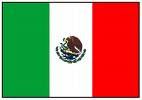
KISSING BUGS
BY DEPARTMENT OF NEUROSCIENCE OF THE UNIVERSITY OF ARIZONA
There are many different species of triatomines (commonly known as kissing bugs or cone-nose bugs in USA, and in different countries of Latin America as chinche besucona, chipo, barberio, vinchuca). Of the 12 species of triatomines that occur in United States, the most important epidemiologically are Triatoma rubida and Triatoma protracta in Arizona and California and Triatoma gerstaeckeri in Texas and New Mexico. In southern Arizona, the most abundant kissing bug is T. rubida. Other less prevalent species include T. recurva and T. protracta. Kissing bugs received their name because they usually bite people near their mouth during the night while they sleep. The two main reasons for this is that kissing bugs are attracted to the odors that we exhale, and our face is usually the only exposed area of skin during sleep. Kissing bugs usually do not burrow under covers like some other bugs or spiders do. Kissing bugs are also called cone-nose bugs or a Mexican bed bugs here in the United States. In Central and South America, kissing bugs are known by many common names such as benchuca, vinchuca, chipo and barbeiro.
Kissing bugs are blood-suckers, like mosquitoes, ticks and tse-tse flies. They usually feed just after sunset. They are attracted to the light in our houses, the odors that we exhale, skin odors, and to the warmth of our bodies. Kissing bugs who enter a house will feed on household pets as well as humans.
In southern Arizona, most kissing bugs are found in packrat nests. Packrat nests provide the kissing bugs with a readily available supply of blood and a safe haven from insect-eating predators. However, the packrat also is a predator of the kissing bug, so safety is not guaranteed in those nests.
The adult females lay eggs usually in the months of May-Sept. The eggs hatch after approximately 3 weeks, giving rise to the 1st instar stage (see photo above). Each additional instar stage is reached after a molting process. The kissing bugs may need several blood meals before molting into the next instar stage. This process leaves behind a thin skin of the previous instar, and it has grown in size and length. After the 5th instar stage, the kissing bug will molt into an adult with wings that have the ability to fly. At this point the adults will leave the packrat nest in search of other blood sources.
During these flights, kissing bugs are attracted to light and host odor. Your porch light or lights from your windows will be attractive to kissing bugs flying nearby. After reaching your house, they will look for a way to enter the house and feed on your pets or you,. The carbon dioxide that we exhale is attractive to the kissing bugs, as well as the heat from our bodies.
Many people have moderate to severe allergic reactions to the kissing bug bite. Reactions from the bite range from skin irritation and redness to anaphalitic shock requiring immediately medical attention. For more information on this, please refer to our Allergies page.
Another possible health problem is Chagas Disease. This is caused by a potentially deadly parasite (Trypanosoma cruzi) that lives in the digestive system of the kissing bug and is excreted during defecation or urination of the kissing bug after feeding. If this parasite enters your blood stream through the bite site or an open wound, you might become infected (note: not all infected people become sick, only 10% of infected people after 30 years or so of initial contact). Testing for this parasite in the local kissing bug population is currently underway by our research group, in collaboration with the Centers for Disease Control (CDC) in Atlanta. This is a major health issue in Central and South America where over 18 million people have become infected resulting in 14,000 deaths every year.










No comments:
Post a Comment